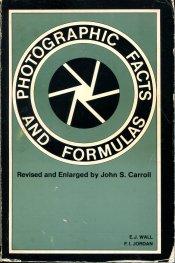Merry Christmas all,
I've developed different fims in the bw reversal process never using any thiocyanate or thiosulfate. I’ll now try to develop Tmax100 and 400 according to the Hans Dietrich recipe:
EDITED LINK (previous was not complete instructions):
https://www.freestylephoto.biz/pdf/product_pdfs/formulary/FormularyReversalTmax_010600.pdf
What Id like to know is why this recipe use thiosulfate instead of thiocyanate? As far as I understand thiocyanate is preferrable? I know there are older Kodak recipes using thiocyanate and I assume this Dietrich knew that and had his reasons for choosing thiosulfate instead. Maybe this is documented in the 1988 March/April issue of Darkroom Techniques but I cant find that publication.
Im thinking that maybe Tmax and that kind of grain films prefer thiosulfate over thiocyanate? Any knowledge/suggestions anyone?
Cheers
Peter
I've developed different fims in the bw reversal process never using any thiocyanate or thiosulfate. I’ll now try to develop Tmax100 and 400 according to the Hans Dietrich recipe:
EDITED LINK (previous was not complete instructions):
https://www.freestylephoto.biz/pdf/product_pdfs/formulary/FormularyReversalTmax_010600.pdf
What Id like to know is why this recipe use thiosulfate instead of thiocyanate? As far as I understand thiocyanate is preferrable? I know there are older Kodak recipes using thiocyanate and I assume this Dietrich knew that and had his reasons for choosing thiosulfate instead. Maybe this is documented in the 1988 March/April issue of Darkroom Techniques but I cant find that publication.
Im thinking that maybe Tmax and that kind of grain films prefer thiosulfate over thiocyanate? Any knowledge/suggestions anyone?
Cheers
Peter
Last edited:












